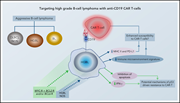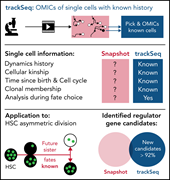Issue Archive
Table of Contents
BLOOD COMMENTARIES
REVIEW ARTICLE
CAR T-cell therapy in highly aggressive B-cell lymphoma: emerging biological and clinical insights
CAR T-cell therapy targeting CD19 has proven highly effective in patients with relapsed and refractory diffuse large B-cell lymphoma (DLBCL), and several products have received approval. Ali et al review the role of this approach for other high-grade non-DLBCL B-cell lymphomas. They discuss how improved understanding of the biological features of these distinct lymphoma subtypes and further testing are needed to define the role of CAR T-cell therapy in their management.
CLINICAL TRIALS AND OBSERVATIONS
Ticagrelor vs placebo for the reduction of vaso-occlusive crises in pediatric sickle cell disease: the HESTIA3 study
Clinical Trials & Observations
Platelets play a role in sickle cell disease (SCD)-related thromboinflammation through platelet-platelet and platelet-neutrophil interactions. Heeney et al report on results from a phase 3 international trial studying efficacy and safety of the P2Y12 (ADP receptor) inhibitor ticagrelor vs placebo for the prevention of SCD crises. Despite successful inhibition of platelet activation, ticagrelor did not decrease the frequency of vaso-occlusive crisis, underscoring the complexity of factors contributing to SCD-related vaso-occlusion.
HEMATOPOIESIS AND STEM CELLS
Combining single-cell tracking and omics improves blood stem cell fate regulator identification
In a series of elegant studies, Wehling and colleagues used time-lapse cell tracking and single-cell RNA sequencing to characterize cell fate divergence of paired daughter cells arising from asymmetric division, allowing them to characterize the molecular changes associated with divergent differentiation.
Translation of cytoplasmic UBA1 contributes to VEXAS syndrome pathogenesis
The adult-onset inflammatory disease termed VEXAS (vacuoles, E1 ubiquitin activating enzyme, X-linked, autoinflammatory, and somatic) syndrome is caused by mutations in UBA1. VEXAS syndrome has high mortality, but the clinical course is heterogeneous. Ferrada and colleagues demonstrate that the heterogeneity is associated with the specific mutations in UBA1 and correlates with the degree of residual expression of the normal UBA1b cytoplasmic isoform of UBA1.
LYMPHOID NEOPLASIA
Impact of T-cell immunity on chemotherapy response in childhood acute lymphoblastic leukemia
Li et al address the role of T-cell immunity on Ph+ acute lymphoblastic leukemia (ALL) outcomes. Using a mouse model, they show that T cells are necessary to maintain response to either tyrosine kinase inhibition or cytotoxic chemotherapy. The authors correlate this with the observation that peripheral blood T-cell abundance in 102 children with ALL was associated with treatment outcomes.
KIR3DL2 contributes to the typing of acute adult T-cell leukemia and is a potential therapeutic target
Cheminant et al examined natural killer receptor (NKR) expression in adult T-cell leukemia (ATL), a lymphoid malignancy caused by infection with human T-cell leukemia virus type 1. They identified KIR3DL2 as being expressed on acute-type ATL as compared with smoldering or lymphoma-type ATL. Blocking KIR3DL2 expression with antibodies selectively kills primary ATL cells and is being tested in a phase 2 study in patients with ATL and other peripheral T-cell lymphomas.
MYELOID NEOPLASIA
Proteomic and phosphoproteomic landscapes of acute myeloid leukemia
THROMBOSIS AND HEMOSTASIS
The Gab2–MALT1 axis regulates thromboinflammation and deep vein thrombosis
Kondreddy and colleagues elucidate an endothelial pathway regulating deep vein thrombosis related to thromboinflammation. They report that a signaling adapter protein, Gab2, propagates signaling from inflammatory mediators in endothelial cells. Inhibition of the Gab2 pathway decreases leukocyte accumulation and attenuates venous thrombosis at sites of injury in mice, suggesting that targeting this pathway can inhibit thrombosis without inhibiting coagulation.
LETTER TO BLOOD
Anti-CD37 α-amanitin–conjugated antibodies as potential therapeutic weapons for Richter syndrome
BLOOD WORK
ERRATA
-
Cover Image
Cover Image
![issue cover]()
Diffuse KIR3DL2 protein expression by neoplastic cells in a representative lymph node biopsy specimen from a patient with acute adult T-cell leukemia. Expression was assessed by immunohistochemistry. See the article by Cheminant et al on page 1522.
- PDF Icon Front MatterFront Matter
- PDF Icon Table of ContentsTable of Contents
- PDF Icon Back MatterBack Matter
- PDF Icon Editorial BoardEditorial Board
Advertisement intended for health care professionals
Email alerts
Advertisement intended for health care professionals











Raise the roof, build the floor
Clinical Trials & Observations